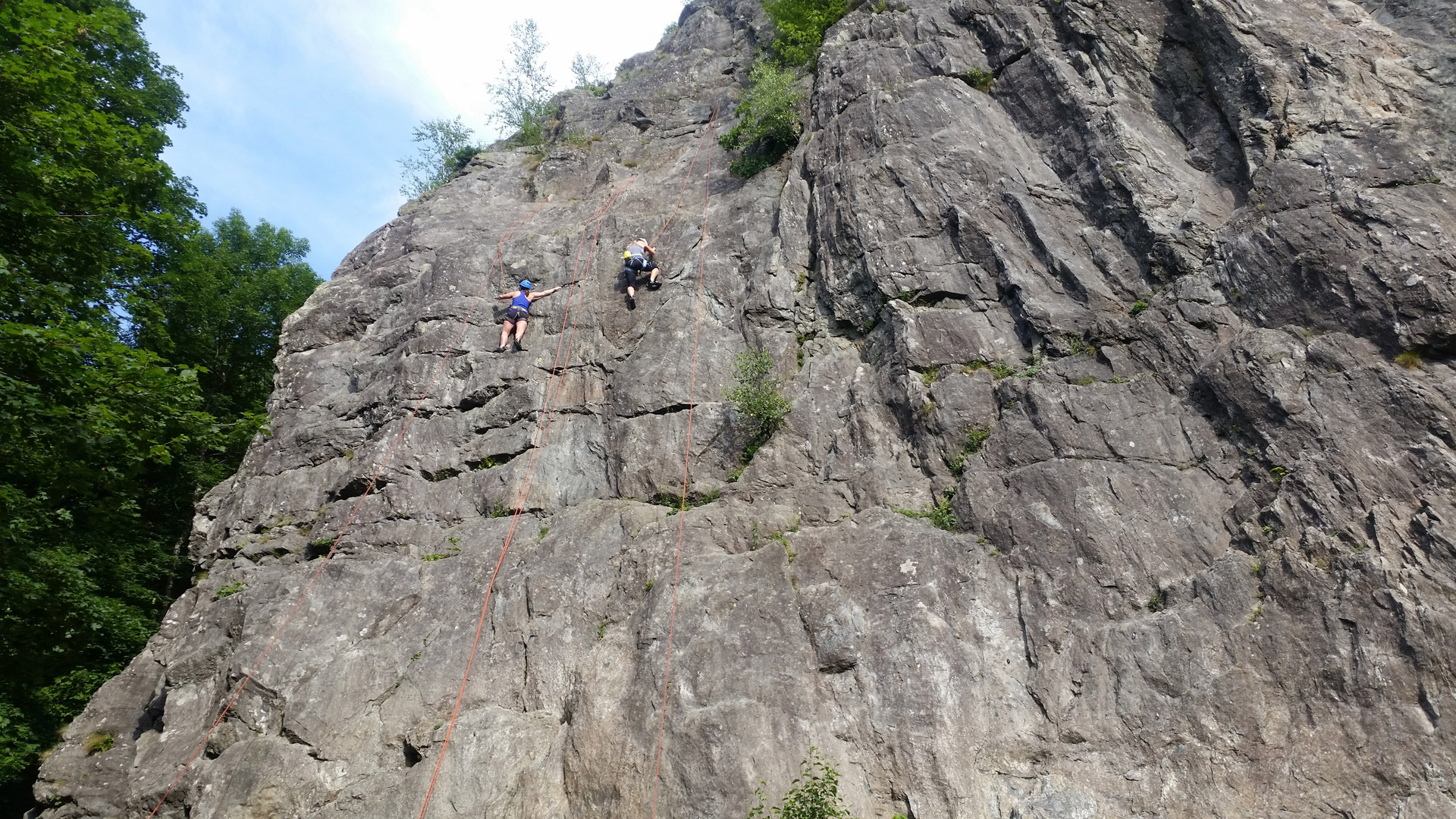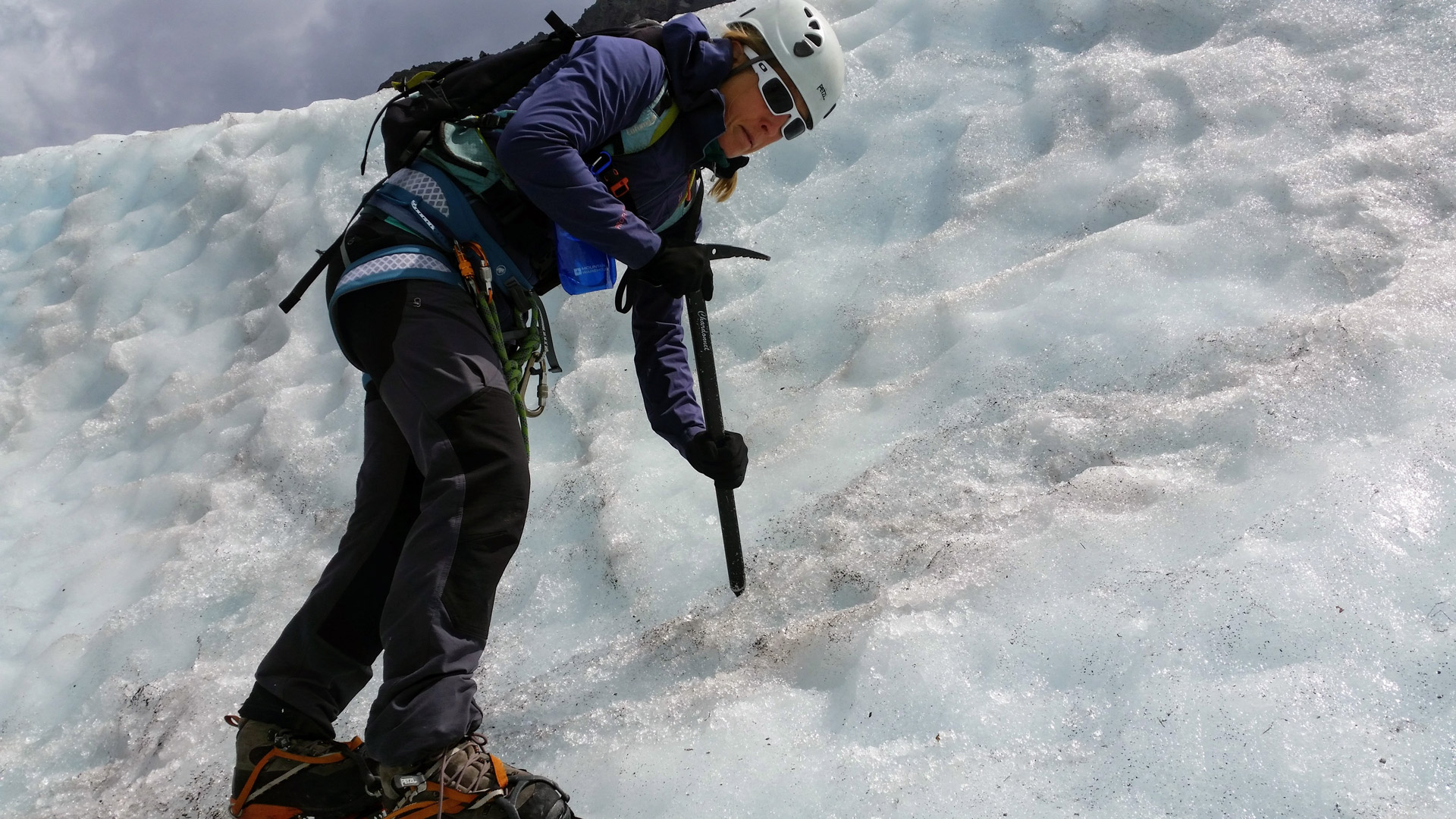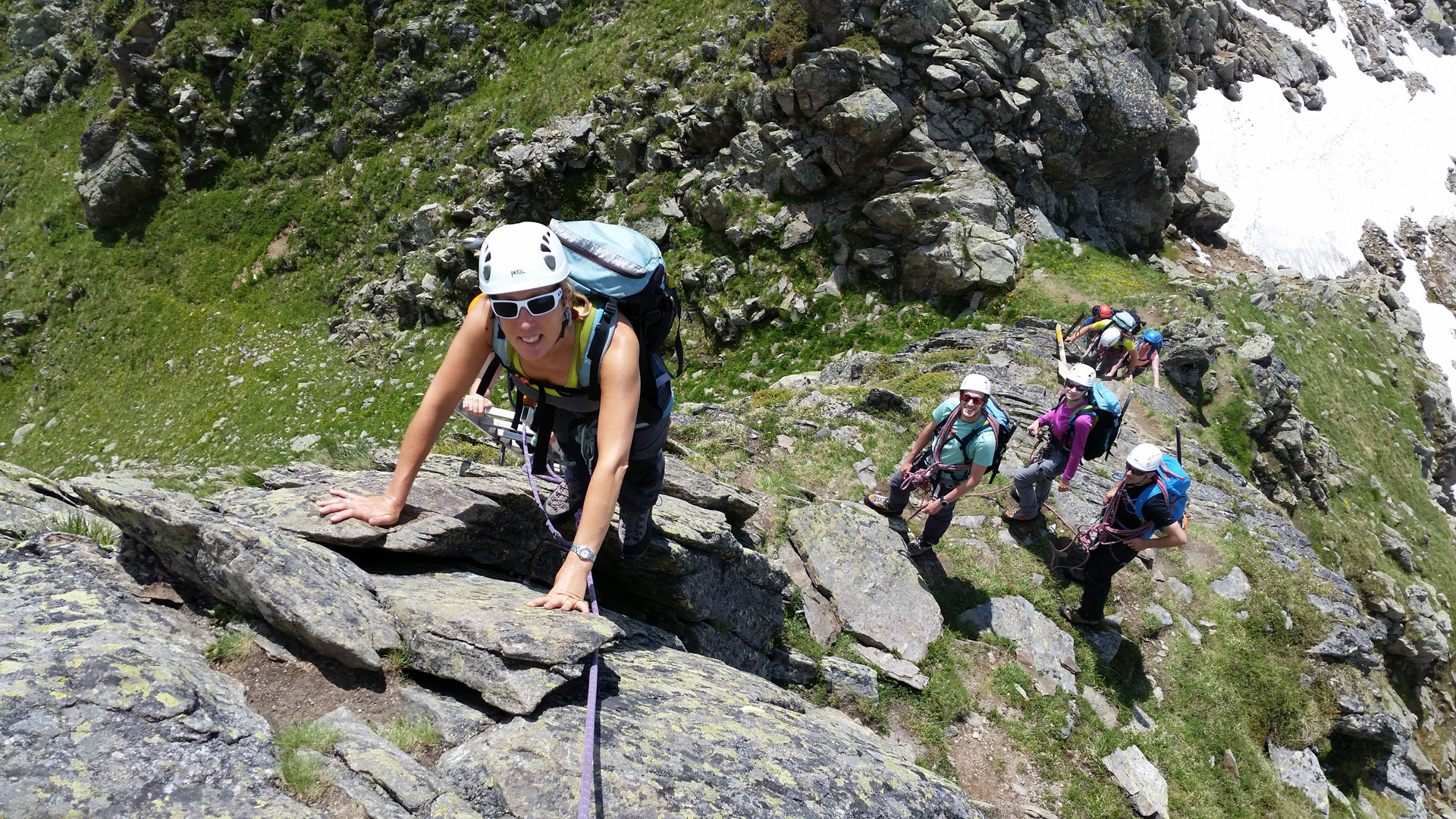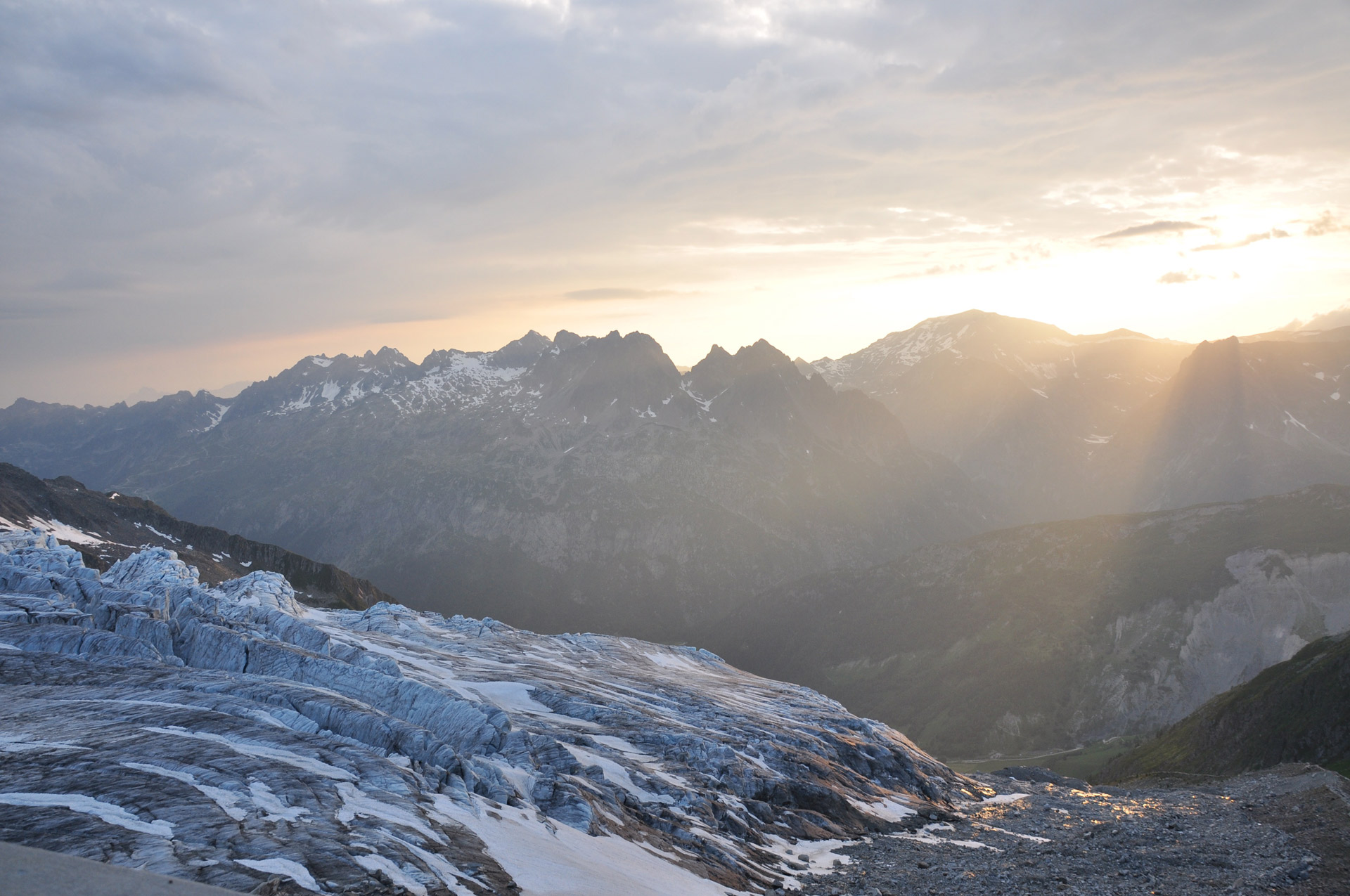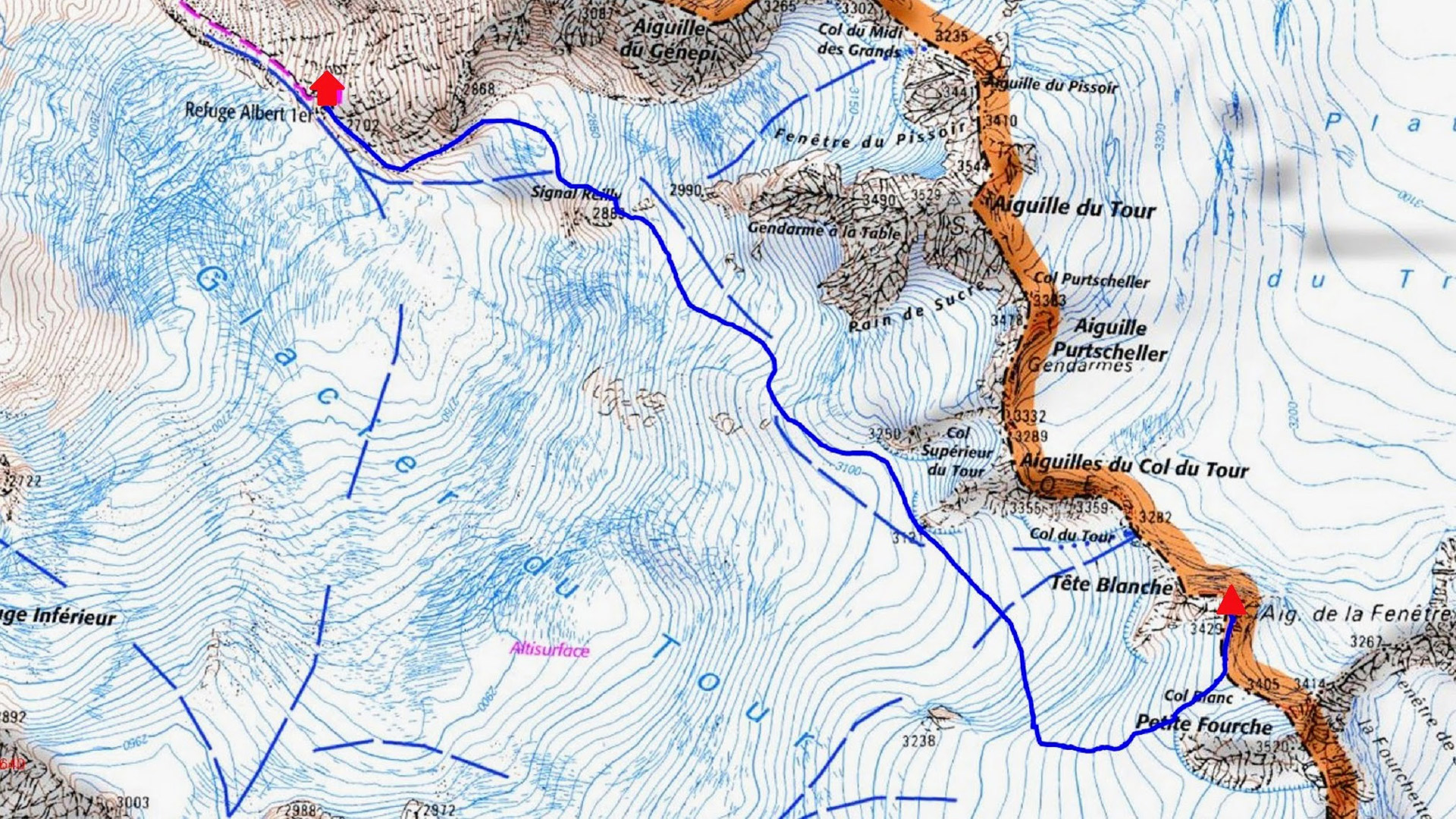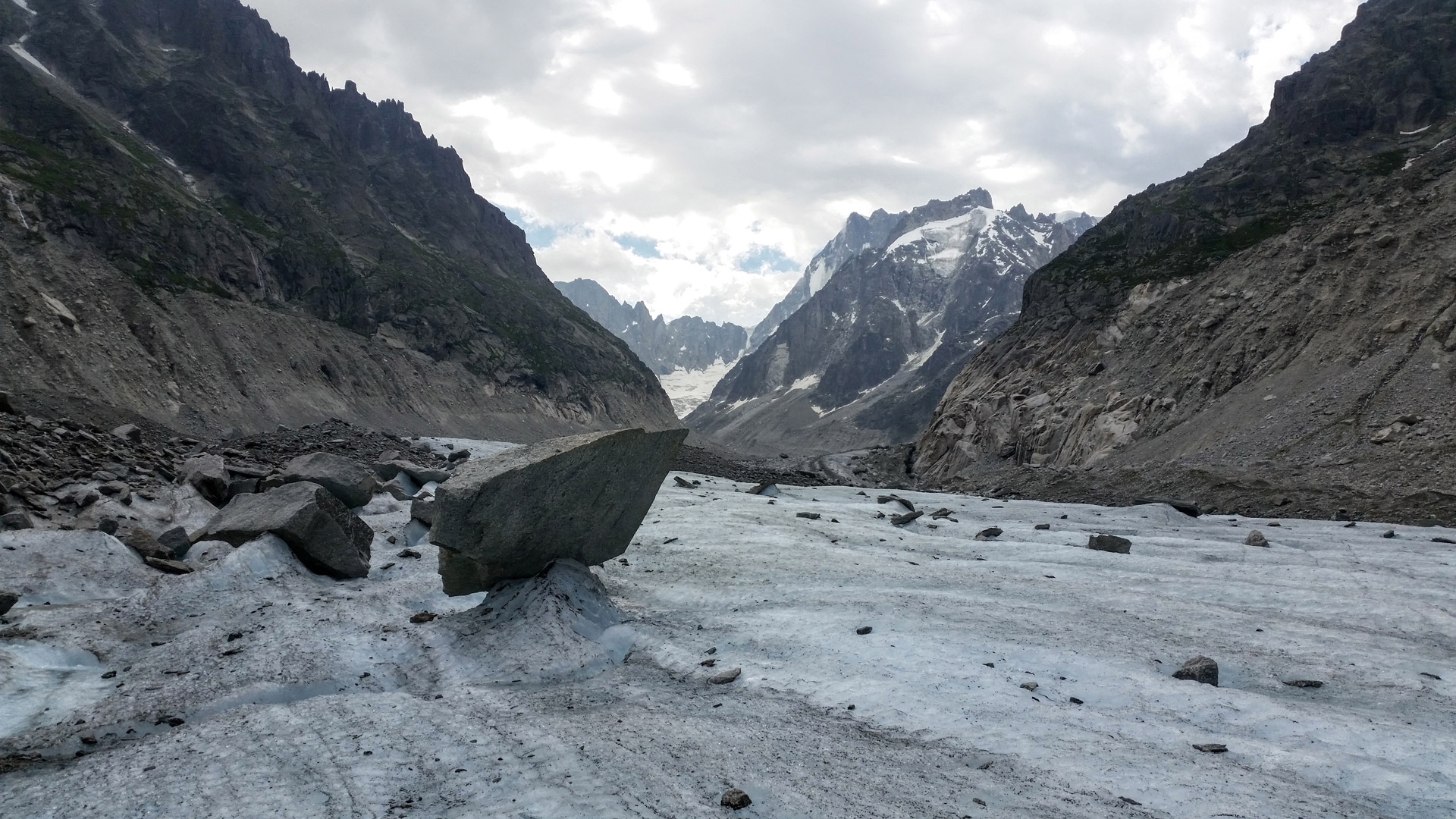Words by Abigail Butcher | Photography by Michel Moreau
“Gaaahhhh!” I squeak, trying not to panic as the soft snow beneath my feet gives way. I have fallen waist deep into a crevasse but thankfully the taut rope between our mountain guide, Michel “Mimi” Moreau, and I stopped me from falling further. Correct use of equipment turned what could have been a catastrophe into nothing more than a slight bit of hassle as Mimi calmly leant against the rope, stopping my fall and helping me ‘swim’ my way out.
“I enjoy being out of my comfort zone – I actively seek it – but this is pushing it.”
It’s not a nice feeling holding yourself aloft by your elbows, legs waggling beneath you, finding zero footholds in a crevasse that extends who knows how deep into a glacier. I enjoy being out of my comfort zone – I actively seek it – but this is pushing it.
I’m on the Glacier du Tour in Chamonix, nearing the top of Tête Blanche on the border between Switzerland and France. We’d stayed the previous night in Refuge Albert 1er, rising at 03:45am to make the 700m ascent from refuge to summit in the early hours — supposedly before conditions softened as walking on hard-packed, frozen snow is easier and safer.
But yet again, conditions are not normal. This has been an unusually hot season and the mountains here — part of the Mont-Blanc Massif — look and feel as they would on a dry year in mid-August, says Mimi, not late June. He’s sad. The glaciers are disappearing before his very eyes.
